In 2010, a Nordic diver discovered a shipwreck off the coast of Finland in the middle of the Baltic Sea. The shipwreck had an incredible treasure: over 100 well-preserved bottles of champagne from the 1840s, and 47 of them were Veuve Clicquot cuvées from the time of Madame Clicquot herself.
After several teams of œnologists and researchers tasted and analyzed the champagnes, they realized they were extremely well preserved for being almost 200 years old. Of course, this created a buzz in the winemaking community, and for Maison Veuve Clicquot, an opportunity to launch a new experiment: purposefully aging champagne under the sea. Thus, Cellar in the Sea was born. These wines would be submerged in cages in the Baltic Sea surrounding the Åland Islands archipelago, where the shipwreck was discovered.
Map showing location of the Åland Islands
The experiment runs over the course of 40 years and resurfaces bottles every few years for the œnology team to taste and analyze. One of the reasons for the longevity of the champagne is the condition of the bottom of the Baltic Sea. Ideal for aging wine, the seafloor is blanketed in complete darkness, has a pressure almost identical to that of the pressure inside the bottles (so less oxygen travels through the cork), a temperature of 4℃ (even lower than the cave temperatures of 12℃ in Reims), and very low salinity levels.
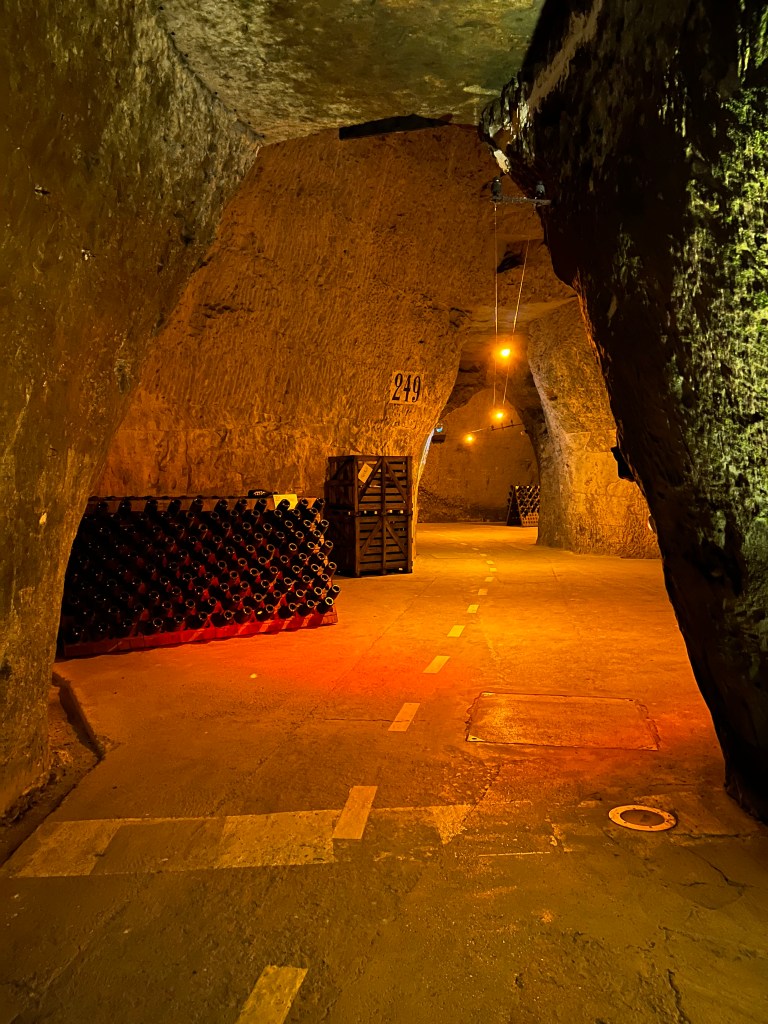
All of these factors dramatically slowed down the aging process compared to the rate of aging on Earth’s surface, thus allowing the contents of the bottles to live on until they were tasted in 2010.
The experiment began in 2014 and ages the same cuvées (the flagship Yellow Label, the Yellow Label in magnum, the Vintage 2004 rosé, and the demi-sec) in cages in the Baltic Sea as well as in the crayères in Reims, where the wines traditionally age. This past June, the house opened up the comparative tasting to the press and invited wine and lifestyle journalists from all over the world to discover the Cellar in the Sea, experience the magic of the Åland Islands and taste the Baltic bottles.
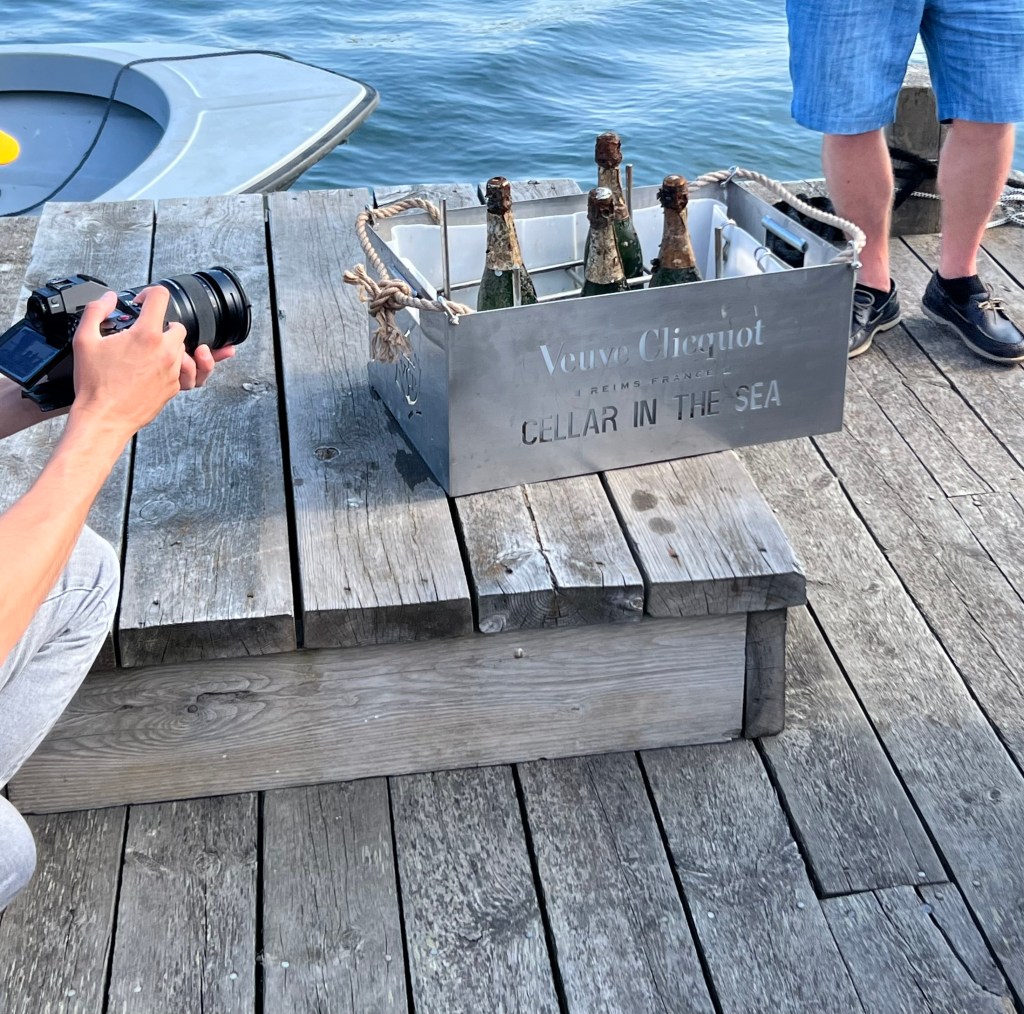
I began working at Veuve Clicquot in the Wine, Food and Education department in April and immediately jumped on the organization of the project. There were wines, merchandise, and decor to order and ship to the Åland Islands, tastings to organize, two programs to design, travel logistics of over 20 international journalists to organize, meals by Michelin-starred chefs to plan, flight tickets to book, private planes to coordinate and much, much more. I was fortunate enough to work closely with the Cheffe du Projet of Cellar in the Sea, which offered me a very close look at all of the planning and logistics that go into a large, international, luxury event like this. Details I never even considered, such as deciding the order and combination of dishes for each dinner course, took so much time, thought and consideration. These are the details that you may not notice as a guest on a luxury experience if they are done right, but stick out like a sore thumb if ever wrong.

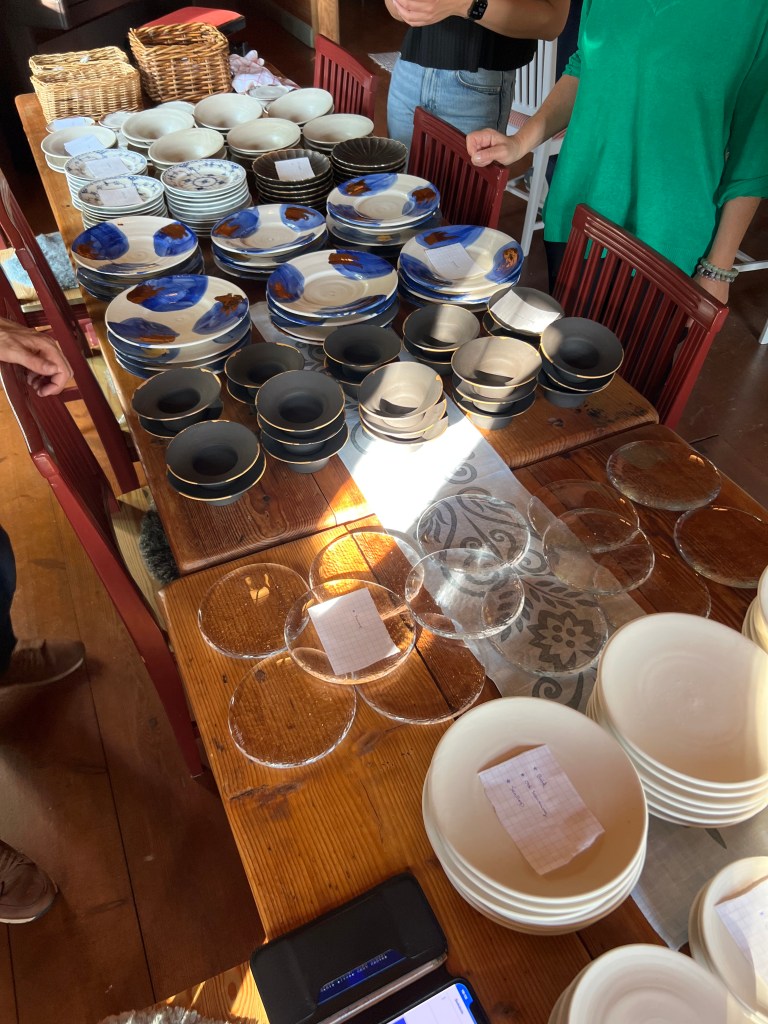
My favorite part of working on the project, however, was creating the carnet de voyage, or travel notebook, for the guests. To do this, I worked closely with the brand image team, Veuve Clicquot historian and archives expert and copywriter to really tell the story of Madame Clicquot and the cellar in the sea.
All of the meetings, long days of logistics and coordination paid off in June when it was finally show time and I got to fly to the Åland Islands to help execute the run of show.
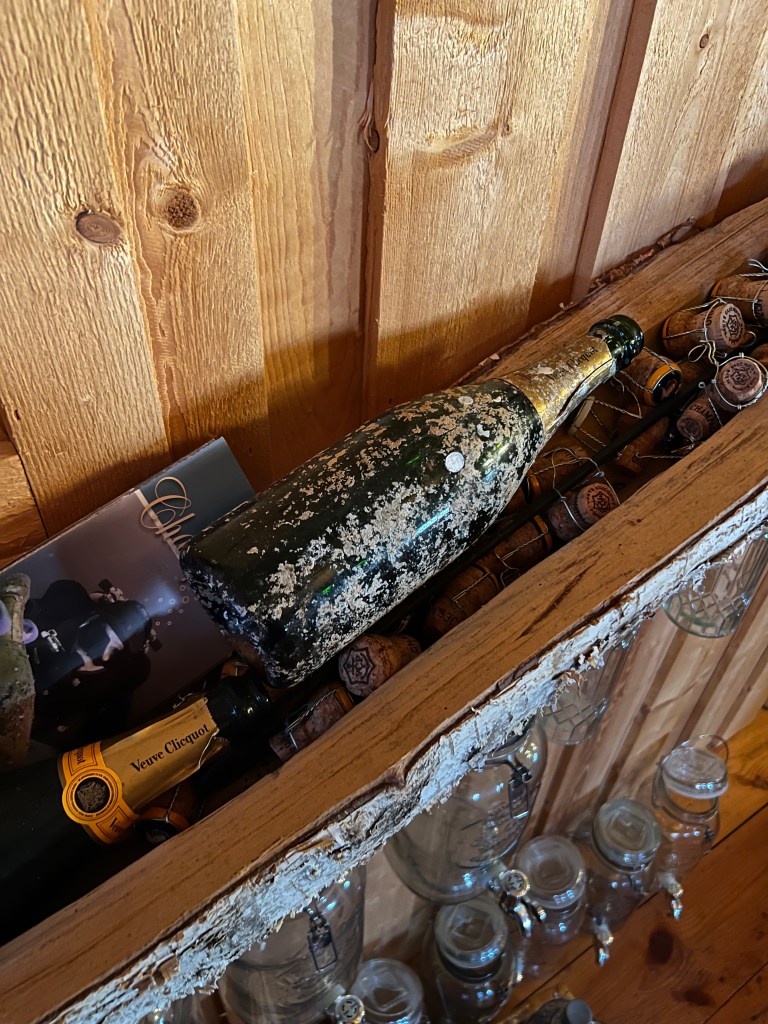
On June 18th, I took a cab to Charles de Gaulle airport where I met one of our œnologists, Lison, for our flight to Stockholm. We spent the evening in Stockholm where we met Fanny, the project leader of the Cellar in the Sea voyage.
After dinner in Stockhom it was about 9:30 p.m. at night and still so light out, a preview for the Midsommer we were about to experience in Silverskär. I remember having butterflies about traveling early the next morning to this magical new place, a place quite still so untouched by tourism and almost untouched by time. It really did exceed all of my expectations.
The next morning, we took a tiny plane from Stockholm to Åland Island, the largest island in the archipelago. Lison and I (quite literally) grabbed a quick breakfast from the hotel and got in the taxi to the airport.

Just 30 minutes after takeoff on the tiny plane, we landed on Åland, the largest island of the archipelago, where an even tinier airport welcomed us. A taxi took us to the dock on the edge of the island where the head of the Silverskär Island, another island in the archipelago, was waiting for us with a boat. Lison, Fanny and I hopped in and we were whisked off to Silverskär where the event would take place.
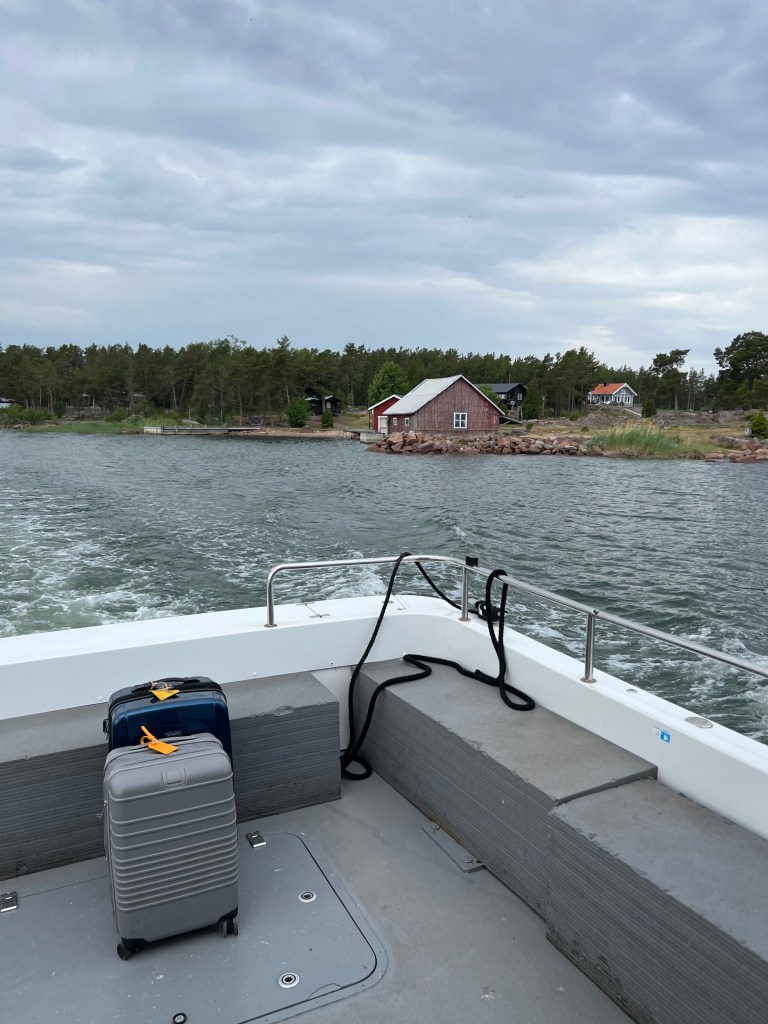


We passed several of the other 6,500+ islands on the way, many of which are only a few rocks but count as islands themselves. It was a truly magical boat ride and the best welcome to the archipelago.
We docked at Silverskär where a red boat house and the rest of the team greeted us. We unloaded the luggage onto the cart that they use to drive around the island, along with the other 15+ boxes that awaited us in the boat house for our direction and sorting, and we quickly got to work.
Fanny, Lison and I were staying in the beautiful Mellangärds cabin, the cottage that I imagine would be the home of my Nordic grandmother if I had one. The house was absolutely filled, from the entryway to the back of the living room, with boxes and boxes of PSOM and gifts for the guests. We had collaborated with Buly, the Parisian cosmetics brand with a very interesting history, to design special items for the guests. The idea was to replace the usual soaps and toiletries in the hotel rooms with the specialty Buly items for the guests, and we had even personalized the cult favorite Baume des Muses for each invitee with their initials. Everything was about the details.
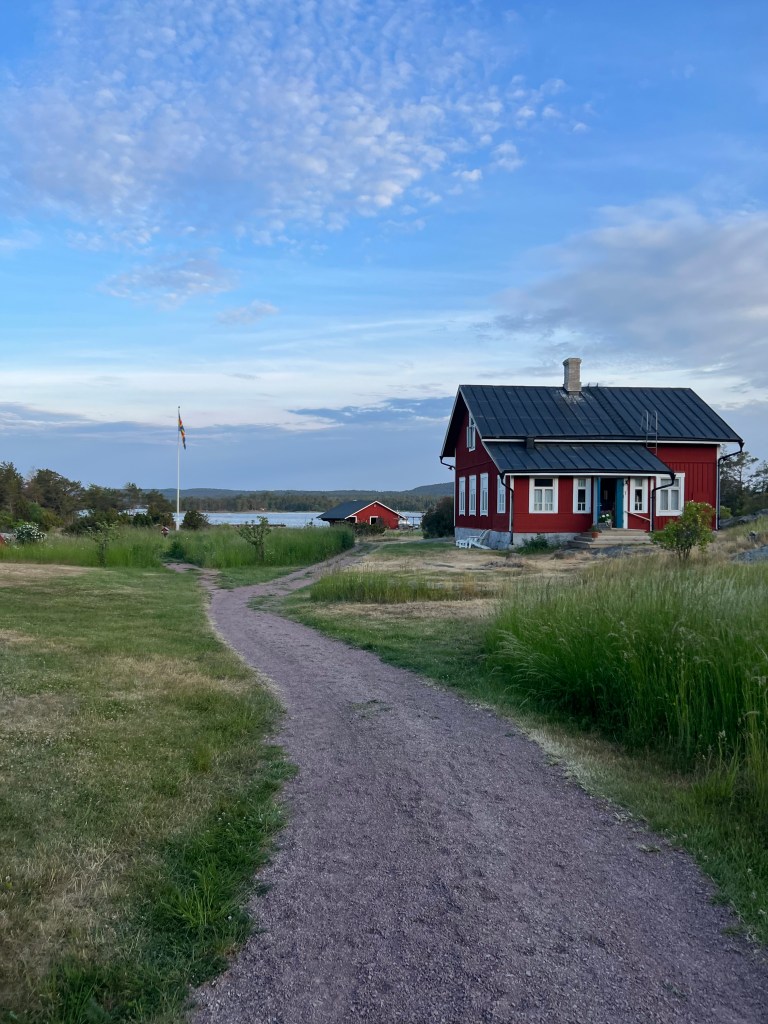
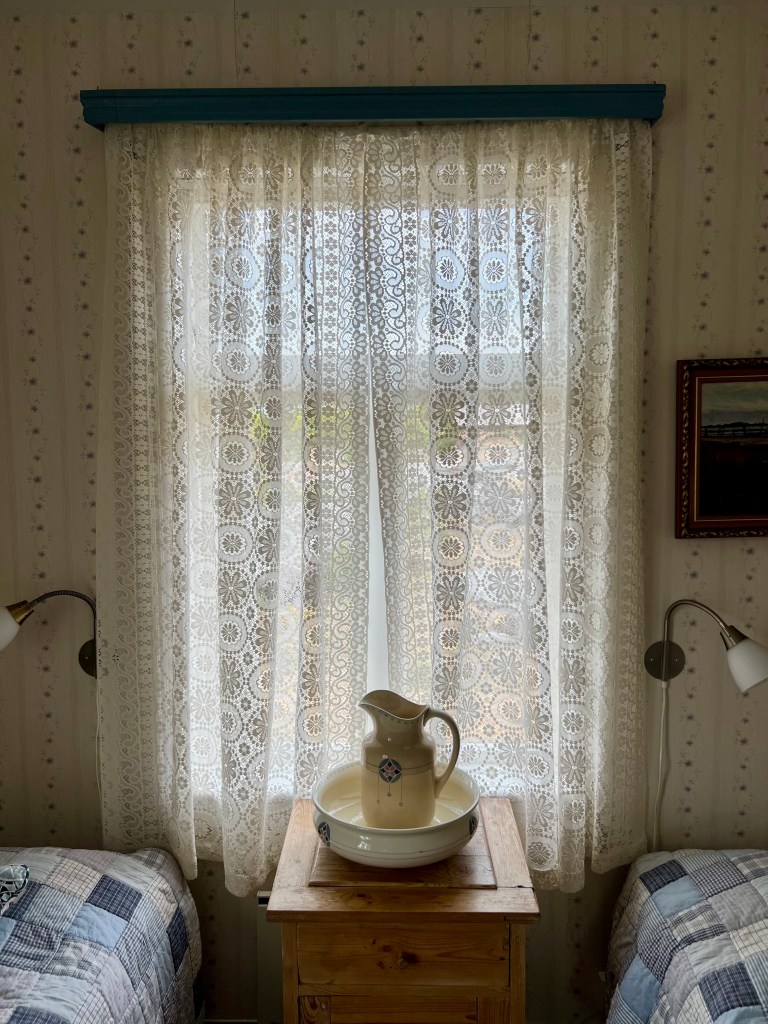

We immediately got to work sorting and creating the gift bags, and deciding what would go where and who would do what. I still wasn’t really fully awake from the plane ride over.
Finally after a couple of hours, we decided to break for coffee and got to see more of the island. The way it was laid out felt like summer camp. Multiple cabins surrounded by beautiful serene nature, with the one main cabin in the middle where everyone would gather for meals and eventually the long-awaited comparative wine tasting.
It was Monday, June 19th and we had the full day as just the team, working together to set everything up and get ready for the guests to arrive. This was my favorite day of the trip.
The team ate a great lunch all together on the big banquet style benches in the main cabin, and we began to debrief the game plan. The lunch was prepared by the resident chef, and included local ingredients from the island and some of the best salmon of my life – served still on the bone and caught that morning. We also had another type of fish, a salad and some potatoes, and to top it all off, a giant bowl of fresh salmon roe. Åland was a seafood-lover’s dream.
After lunch we spent the rest of the afternoon setting up the island and dissecting the details of every event on the program. At 10 p.m. we went for a boat ride to Klobben, another island in the archipelago about a 15 minute ride from Silverskär.

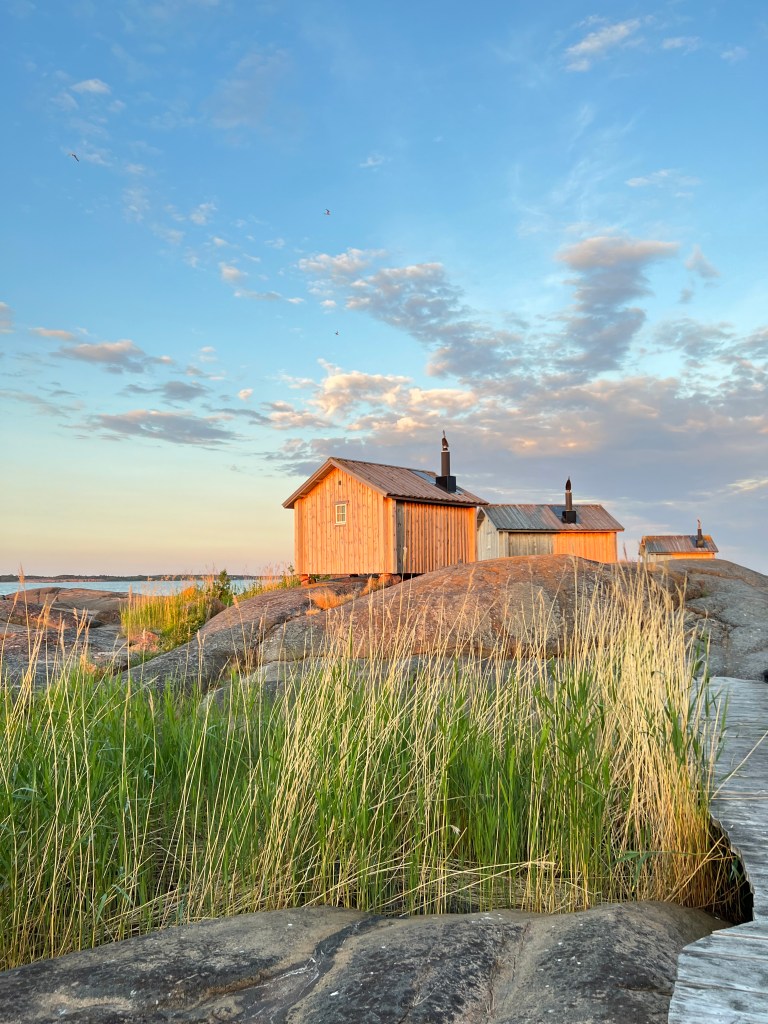
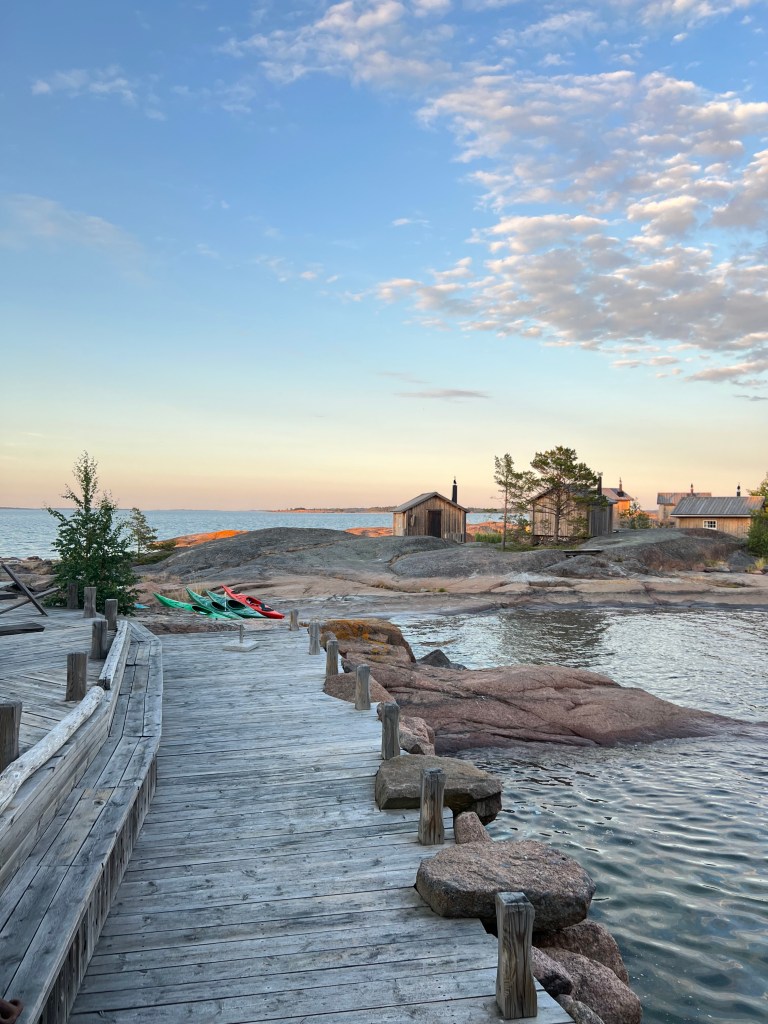
It was Midsommer season, so the sun never truly sets during this time of summer. At 10:15 p.m. we could still see the full sun in the sky.
On the boat was the Clicquot team, the Silverskär team and the Michelin-starred chef Filip Gemzell, his wife and business partner/sommelier of their restaurant Äng, and their team of 2. We arrived at Klobben and had a short tour of the island, which was so peaceful and serene. People can even rent little cabins on the island for a vacation. It’s truly an off the grid experience.
On Klobben we set up for the BBQ-chic lunch for the next day and the wine tasting that was to take place with the journalists and œnology team, placing PSOM everywhere and making sure all of the necessary equipment was on site.



Next we took the boat back, but first stopped at Champagne Island along the way. This is the island near where the Veuve Clicquot wines were first discovered by the Nordic diver Christian Ekström in 2010, who was present for the voyage. One of the journalists from the UK, Phoebe Smith, is a certified diver as well and got to dive with Christian the next day to bring up the bottles of champagne aging under the sea for the comparative tasting.

We returned to Silverskär at around 1 a.m. and I was shocked to find the sky still so illuminated.

The next morning after coffee and another delicious breakfast served in the main cabin (with the best butter of my life), we put the finishing touches on the rooms and triple checked every detail. The press was arriving.
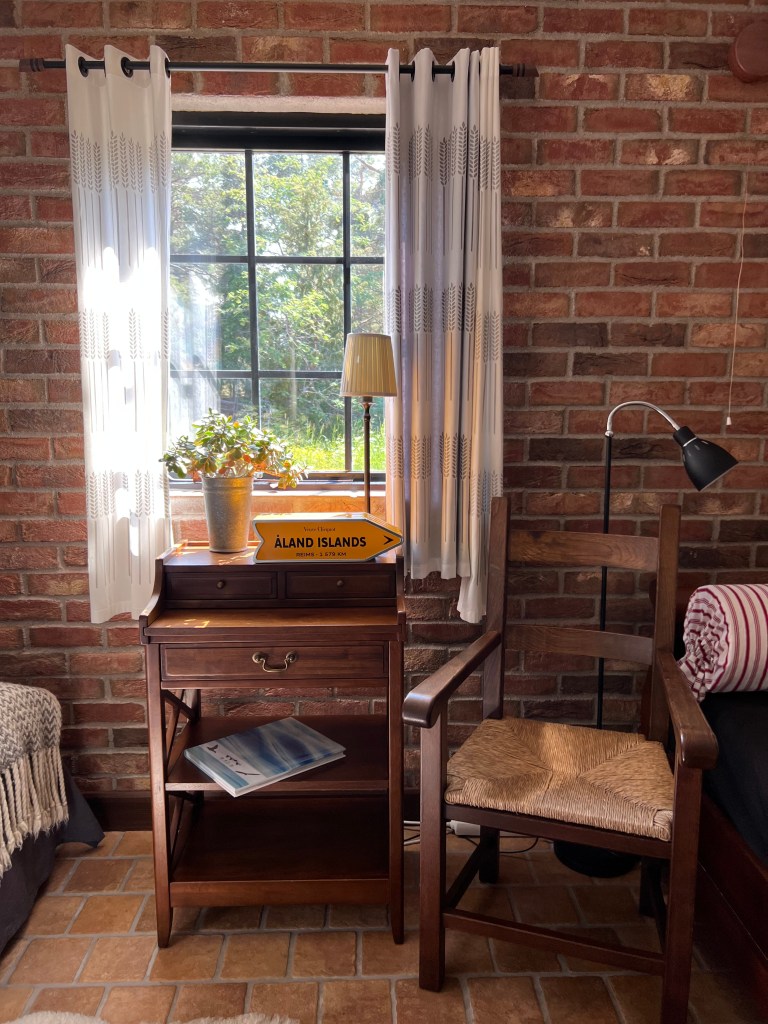


We gave each guest a bottle of the Veuve Clicquot flagship cuvée, personalized Cellar in the Sea robes, tote bags by Cala x Veuve Clicquot, slippers, personalized Cellar in the Sea towels, Clicquot blankets, a notebook, and sleeping masks, which was a genius idea considering the morning light shines so brightly and so early during this time of year.
The journalists and Clicquot executives arrived from Champagne around noon at Klobben, just in time for a BBQ-chic lunch on the island. Following the lunch, the boat taxied everyone back to Silverskär where a comparative tasting experience was waiting for them in the main cabin.

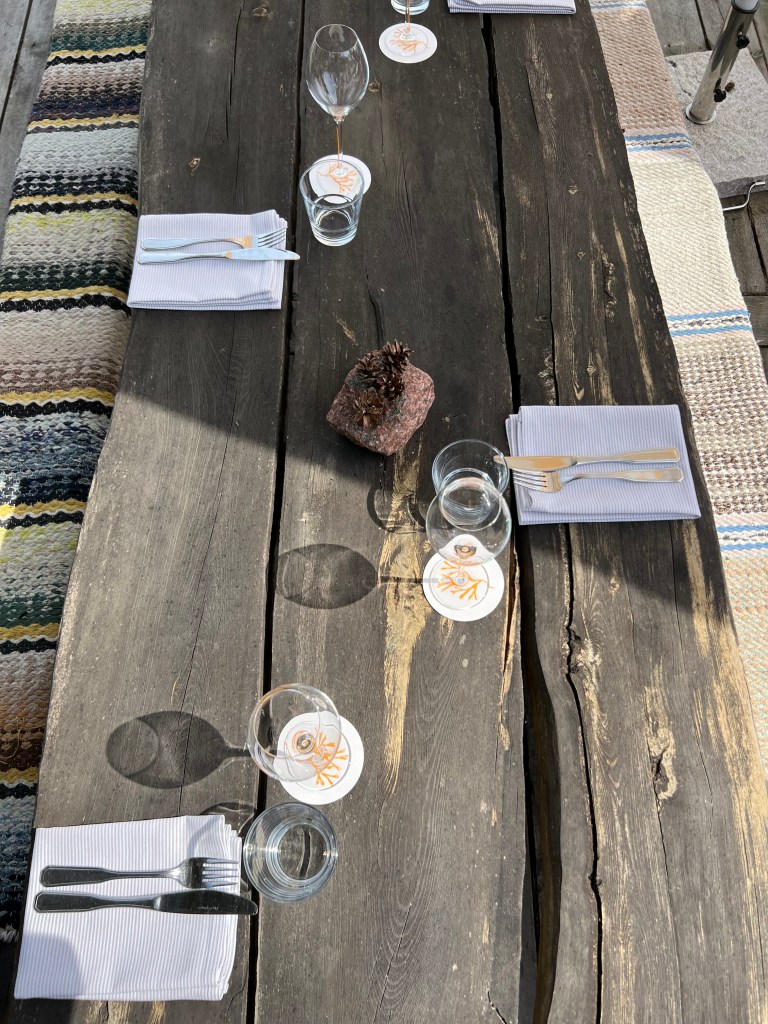

The tasting was led by Gaëlle Goossens, the head of Œnology and Innovation, Communication and Development. The tasting highlighted the Cellar in the Sea experiment: it presented the wines from the sea and from the crayères side-by-side. The journalists were then able to perceive the difference between the two wines and understand why the sea imparts such a special sensory profile on the wines, and thus why the original bottles from 1840 were able to survive for so long under the sea.
“We thought we would have two different styles of aging, with one fresher and the other older. But now the wines from the cellar and the Baltic are developing tertiary aromas but they are developing two different styles of those aromas.”
Gaëlle Goossens for Robb Report
After some much needed free time in the afternoon, it was time for apéritif and the Midsommer celebration. We even had local Ålanders come to present a real Midsommer celebration, with music and the traditional Midsommer pole.

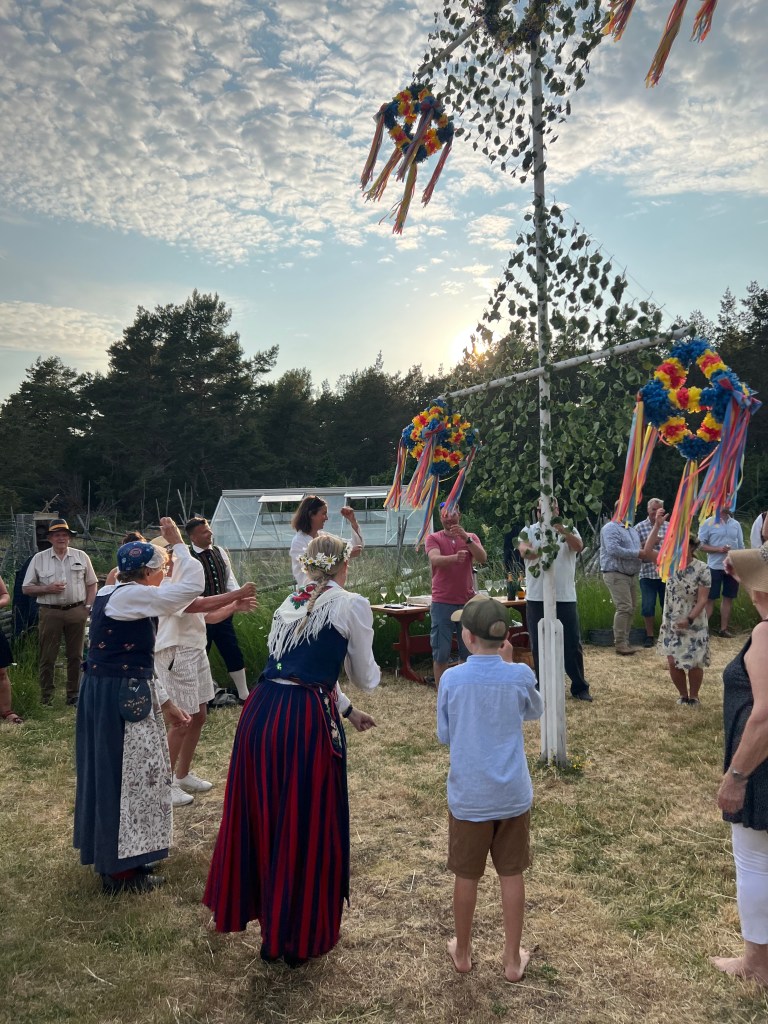

During the apéritif we served magnums of the flagship cuvée Yellow Label (Carte Jaune) with hors d’œuvres, again with everything being made from the freshest local ingredients. One was a white fish roe with asparagus which was absolutely delicious.
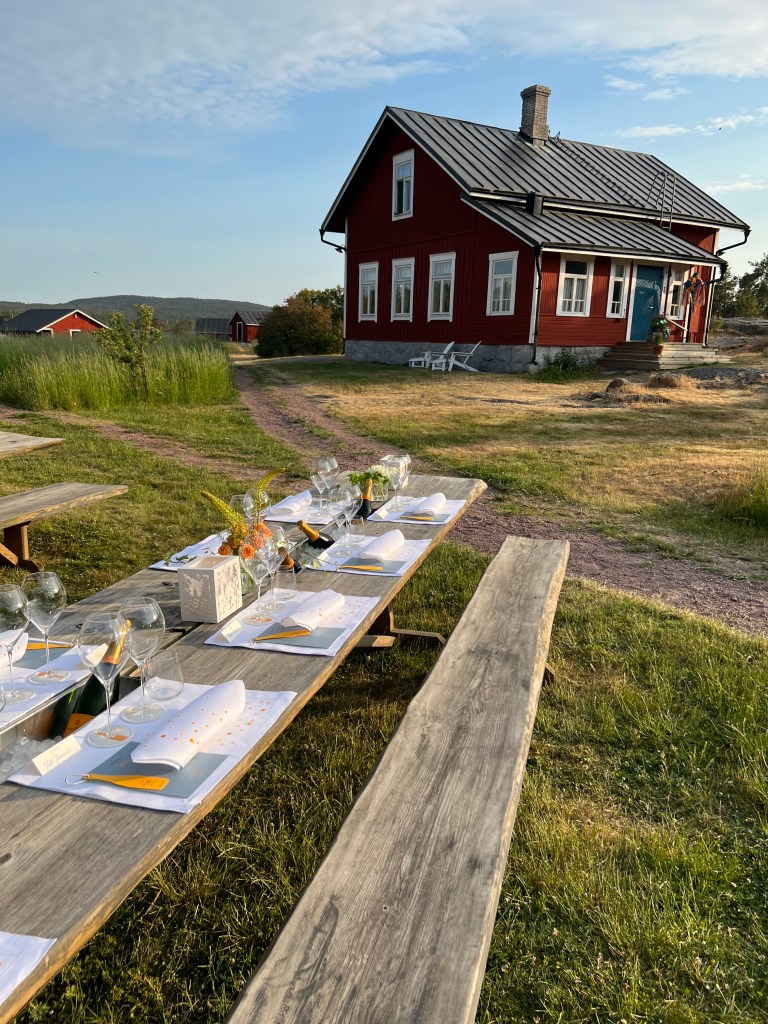

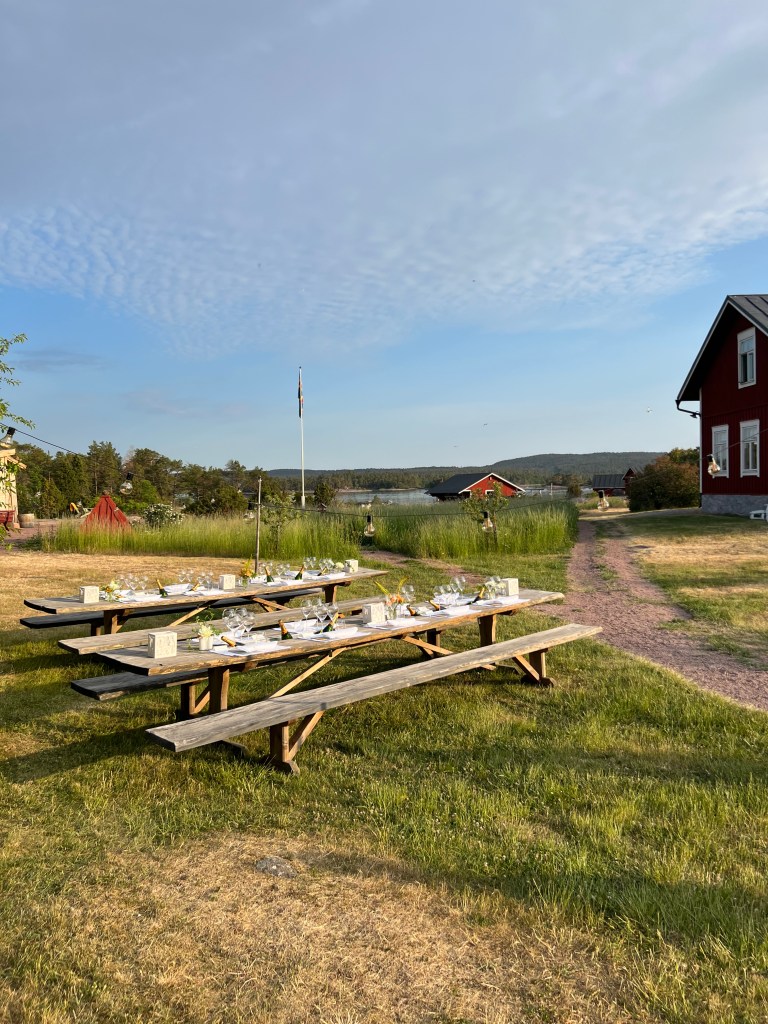
Next it was time for the highly anticipated dinner prepared by Filip Gemzell and his team. Filip owns Äng restaurant in Sweden, which holds one Michelin star. The restaurant is truly surrounded by nature and serves thoughtfully sustainable cuisine prepared only from ingredients the restaurant grows or sources locally. The restaurant now also has vineyards where they grow native Swedish grapes and produce wine. I was lucky enough to try the sparkling solaris by Äng after the trip, which was stunning and bore a striking resemblance to a blanc de blanc, but with an ethereal lightness and freshness.
The menu was inspired of course by local cuisine and paired with some of Veuve Clicquot’s greatest cuvées.
During the (3 hour, multiple course) dinner, the team waited in the main cabin for the next act. In the meantime, we chatted and got to catch our breath a bit. I didn’t get a chance to try the Chef’s cuisine, but we did get to play cards and taste some vintage Clicquot cuvées while we waited.

The next day it was time for me to go home. I enjoyed one last breakfast, said goodbye to the best butter in the world, took one last walk around the island and threw my carry-on onto the boat.


The boat took us back to the dock where the journey first began. I said goodbye to the most incredible and unexpected voyage of my life, but will always hold onto the memories with so much gratitude for the fact that I was able to contribute to such a special, once-in-a-lifetime project.
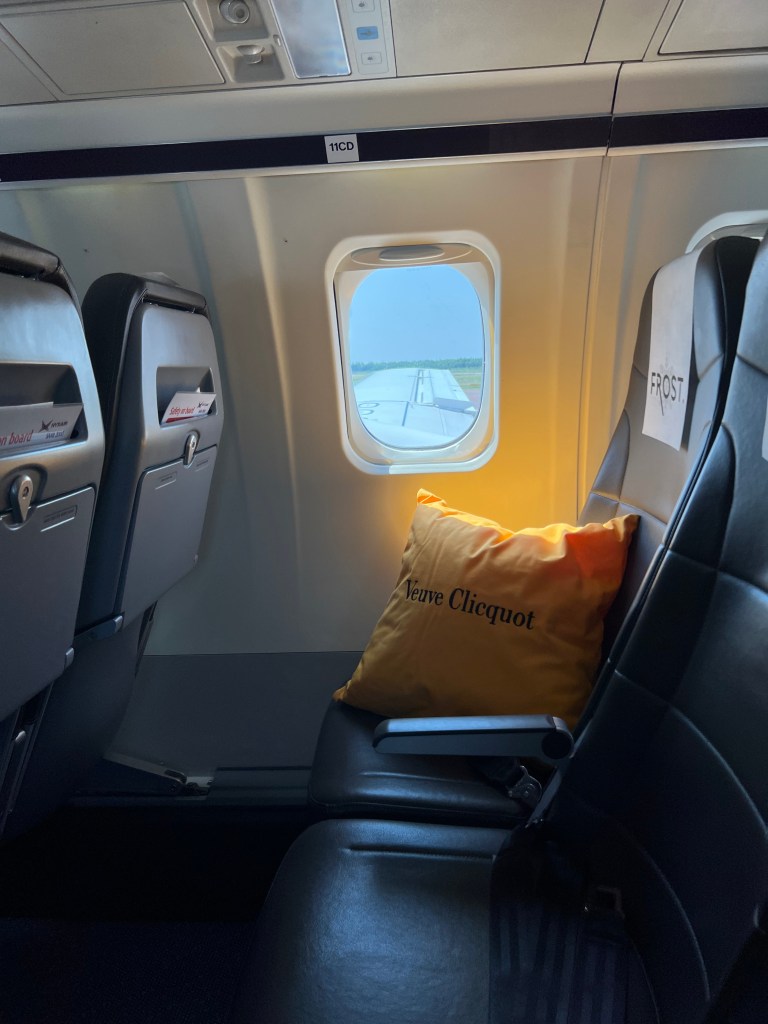
Related articles
https://www.cntraveller.com/article/champagne-from-the-cellar-under-the-sea
https://www.champagneeveryday.com.au/amp/taking-cellaring-to-new-depths
